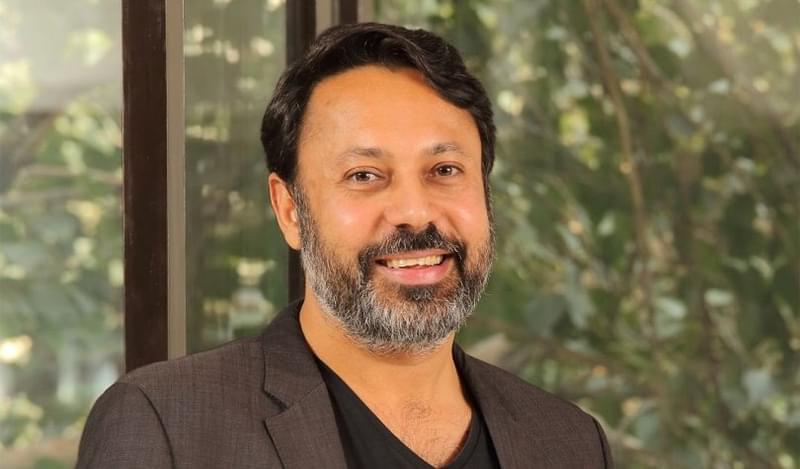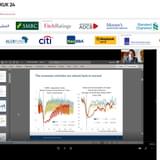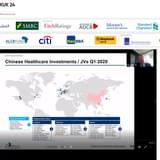Q. What are some of the main drivers for issuing a green bond over raising debt through vanilla or traditional instruments?
A. We were the first company to build out solar power production facilities in India in 2009, and operate among the largest and most diversified solar power portfolios in the country today. We issued our equity on the New York Stock Exchange late last year, a move aimed at diversifying our shareholder base and attract global investment. Similarly, issuing the green bond this year is part of that broader strategy to diversify our debt holders. India aims to build 100-gigawatt of solar power production, and depending on the weighted average cost of these projects we are talking about needing to attract between USD70bn to USD80bn into the sector. We saw an opportunity to become a leader in the area of sustainable finance, of tapping into that new pool of liquidity and fixed income investment – not just for us, but the wider industry as a whole. At the same time, we did not want to compromise on the objective of improving our overall cost of debt.
Q. Azure recently made its green bond debut with a USD500mn 5-year bond. How would you compare investor sentiment and the types of inquiries you receive from investors on green instruments compared with traditional ones [during the roadshow]?
A. The good thing is that there have been other transactions of this nature coming out of India, so fixed income investors were quite knowledgeable about the energy markets in the country. We were the first to issue a solar green bond out of India – an interesting observation we noted is that earlier bonds issued in this segment were in the wind and hydro subsects of the power industry, despite the fact that solar is considered our strongest and most dependable renewable energy source. We have worked frequently with the government of India, where you have various agencies Like Solar Energy Corporation of India or National Thermal Power Corporation, which purchase power from us and on-sell to other distribution companies. So, the fact that we could bring to bear sovereign-backed credit into the fold was appealing to investors, and we issued the transaction largely on the strengths of our contracts versus the strength of our balance sheets. Most of the questions from investors related to the strength of governance, board and shareholder arrangements, and the company’s long-term commitments. The fact that we listed on the NYSE, long-term multnational investors and institutional investors, as well as an independent and strong board was very appealing. Disclosure is also important for investors, as well as a track record of regular, on-time repayment. I wouldn’t say the questions we received on this transaction were altogether different from what we would have encountered on a traditional instrument.
Q. Was getting buy-in for the transaction from other stakeholders relatively easy or difficult? What did you or others need to do internally to ensure everyone was aligned in terms of the company’s green financing objectives?
A. Fortunately, right from the start we had built the organisation to adhere to a high disclosure and sustainability standard; while developing the assets we follow an inclusive growth model; we deploy the best-in-class technologies on projects; and prioritise active stakeholder engagement throughout the lifecycle of our projects. We owe some of these positive habits to our sponsors that supported us in the early years – organisations like the IFC, which invested in our company in 2010. The DNA of the organisation has in a way led to this natural conclusion – investing in a green bond. That said, there was not really much internal stakeholder management needed in order to get everyone in alignment towards this common goal. We certified the bond through the Climate Bonds Initiative, and there was nothing particularly cumbersome for us in going through that process, in part because much of what was being asked for in terms of data and disclosure were things we already voluntarily do.
Q. Many of those that have issued green bonds in the past have suggested the cost of auditing and compliance can make or break the decision to issue. What are your views on this?
A. I know that on occasions, these disclosure and reporting requirements have deterred some companies from embarking on the initiative to begin with, but that wasn’t the case for us. Is the extra work worth the investment? Looking at it from an investment perspective, it is, and some might not see the value. While we opted to secure green certification, I get the sense that in the absence of green certification, most emerging market fixed income fund managers would not be deterred from investing in those instruments given the underlying nature of the business. For us, it was important because of our DNA, what we believe in and what we stand for as a company, but generally, we have heard that it is a ‘nice to have’ rather than a ‘must have’. That being said, some of the pressure to move down this route really needs to come from the investors; whether they are willing to pay a premium or reward green bond issuers for the ESG benefits embedded in those instruments, that would be beneficial for the sector. We are perhaps further away from that point, where we would like investors to be, though it is encouraging to see more funds dedicated to these ends. Regardless, we continue to follow the work we set out to do from day 1.
Q. How do you see India’s green bond market developing in the coming years? Are your peers also buying into the market’s potential or is there still some apprehension among them?
A. I get the sense there is a great deal of interest in the market and many are looking at green bonds carefully, particularly for renewable energy applications, given the depth of the market and the country’s energy ambitions. The energy sector requires a lot of new capital that simply isn’t going to come from traditional banks, investors or project lenders, certainly when you consider the scale of the investment required; within this context, the green bond market has no choice but to flourish – and it will. We are still in the early years, but we expect many more firms to go down this path in the near term.
We also feel that the markets in India – from a ratings standpoint – are dependent on off-takers, contracts with state-run utilities and distribution companies, which may not necessarily be robust enough from a credit standpoint to structure a high-quality bond. To counter that, the government has helped develop some innovative structures – for instance, the creation of intermediary procurers like NTPC and Solar Energy Corporation of India – so that you aren’t necessarily relying on a state-owned distribution company but a sovereign counterparty to bolster the credit quality. Stronger credit coupled with large-scale projects will open up a much larger market for green bonds in the coming years.









